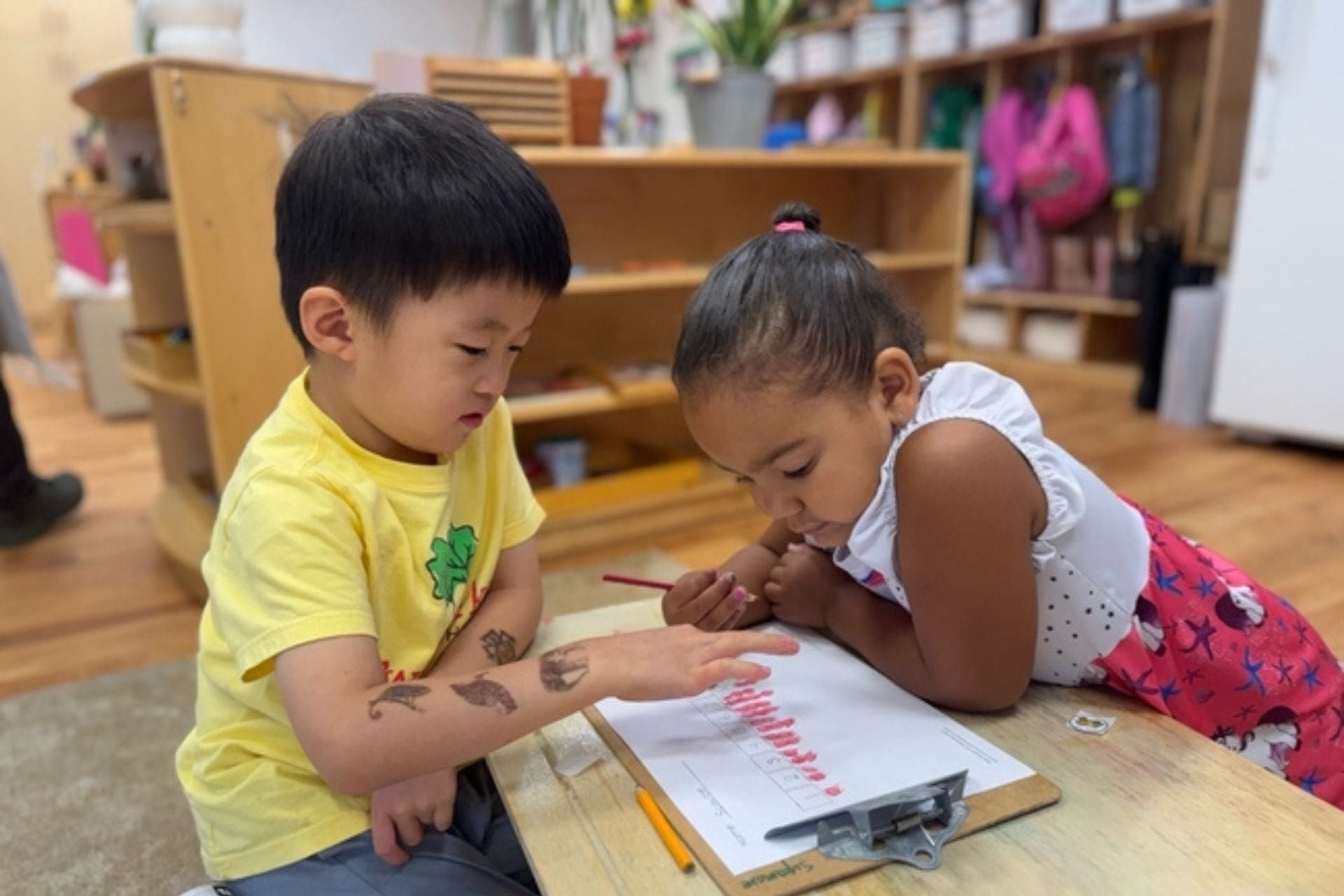Montessori Math Materials Explained

In Montessori classrooms, math begins long before children learn to add or multiply. From the earliest years, we lay the groundwork for mathematical thinking through hands-on exploration, curiosity, and joyful discovery.
From the Concrete to the Abstract
Dr. Maria Montessori recognized that children first understand ideas through their senses and their hands. In our classrooms, materials like number rods, spindle boxes, and golden beads give children a concrete experience of quantity and sequence. Before they ever see a written numeral, they can feel the difference between “three” and “ten.”
When a child counts out beads, lines up rods, or places number cards in order, they are doing more than counting — they are forming a deep, sensory-based understanding of math that will support abstract reasoning later on.
The Joy of Discovery
Our math shelves are filled with inviting materials that draw children in naturally. For example:
- Number rods show length and quantity side by side.
- Spindle boxes teach that numbers represent a set — “three” means three objects, not just a symbol on a card.
- The golden beads introduce place value and the decimal system in a beautifully tangible way.
Children love these materials because they can explore, correct themselves, and repeat until they reach mastery — all without pressure or rote memorization.
Building Confidence Through Hands-On Learning
Because every lesson builds upon what came before, Montessori math nurtures true confidence. A four-year-old proudly counting out golden beads for “1,000” may not yet do formal multiplication, but they are already grasping big mathematical ideas — quantity, grouping, and base ten — through joyful play and repetition.
A Foundation for Lifelong Learning
By the time children leave our classrooms, they don’t just know numbers; they understand what numbers mean. The early experiences with Montessori math materials prepare them for future abstract work — including multiplication and division — with curiosity and enthusiasm instead of anxiety.
Dr. Montessori wrote that “what the hand does, the mind remembers.” This truth is beautifully evident in our math curriculum. By allowing children to explore numbers concretely, we give them more than math skills. We nurture curiosity, order, and confidence, setting the stage for a lifelong love of learning.
At Twin Parks Montessori, we see every day how math, approached the Montessori way, becomes a source of wonder. When children are free to explore with their hands and hearts, numbers truly come alive.
We invite you to visit our classrooms here on the Upper West Side of Manhattan to see how children in Montessori build a positive relationship with math!

